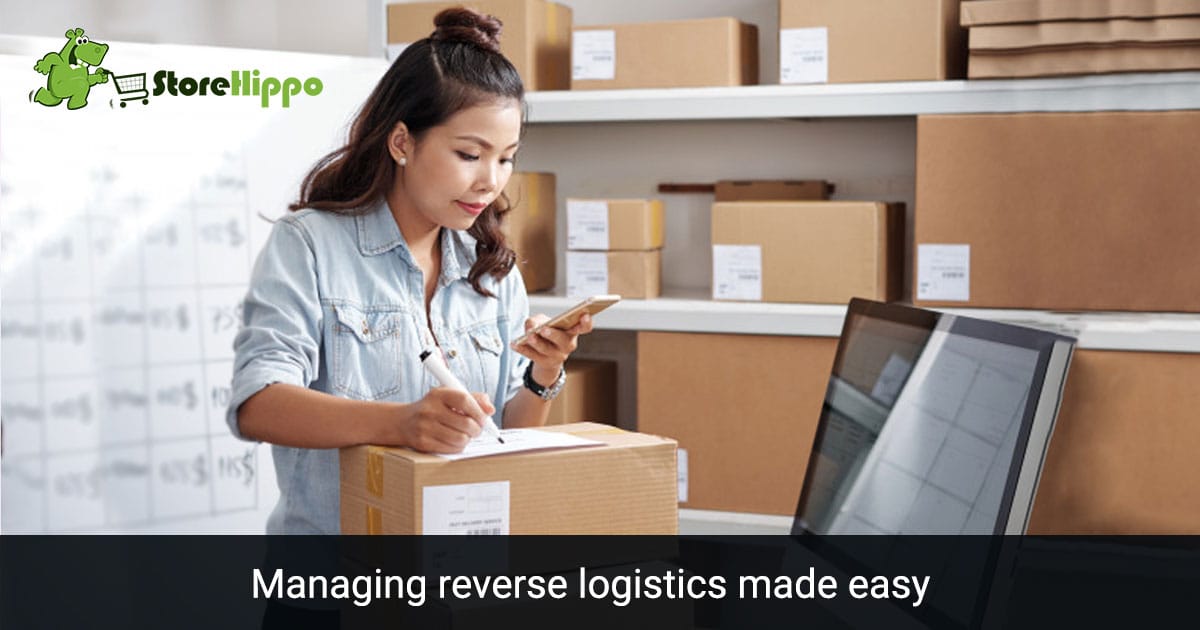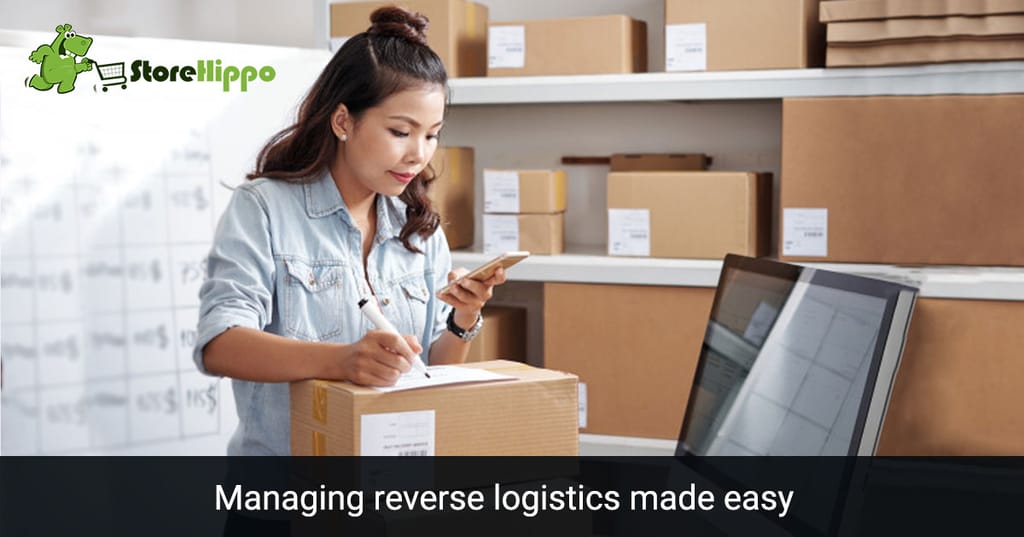In recent years, the global logistics industry has witnessed an increased incidence of product returns. As an online retailer, you wouldn’t agree any less!
Stats validate that traditionally, only 8 to 9 percent of merchandise is returned as compared to online orders where the return rate is 25 to 30 percent.
It is quite obvious for you to think forward supply chain management as a key to governing sales and profit margins. But times are changing and with that, you might want to revise the rules.
Nowadays, handling reverse logistics has become more of a conscious strategic consideration when business owners sit to plan their supply chain networks.
So why is the reverse supply of goods so important?
Well, take a look at the impact of an online retail customer’s return experience as below:
- More than 80% of customers will not shop from your portal again if your return process is not convenient enough
- Almost 95% of buyers will shop from your portal again if your return process is convenient and flawless
Woah, 95% is like a huge chunk of customers. This has put a strain on supply chain funnels and has sounded the call for swift return logistics planning.
When you reach critical mass, returns can most likely affect your bottom line and brand image if mishandled. They can also add to a whole load of a financial burden to your supply chain and instead of soaring your business can pull you down.
Does this sound like the end of the world? Don’t worry, it isn’t. There is always a systematic approach to managing everything and therefore returns can also be handled smoothly if you improve your reverse logistics planning.
In this blog post, we will show you 5 ways through which you can manage your return orders with a big broad smile!
Table of Contents
1. Choose a carrier that specialises in handling reverse orders
Every blog post that you read on supply chain management will advise you to opt for multiple carriers to manage your orders.
Even though your business is only just beginning to grow, it would be a good idea to pay heed to this advice. There are various companies in the market that provide e-commerce courier service and more are just coming up.
While most of them offer similar services, there is always one unique selling proposition that is especially true for each carrier. Like for instance, if you want to sell your product overseas or reach out to a global audience, then join hands with a fulfilment partner that’s pro in providing that service.
Similarly, there are several players in the market, who claim that they can handle returns unlike any other. It would be a good idea to partner with a carrier that specialises in handling returns and enables you to roll out a smoother reverse logistics.
2. Add intelligence to reverse supply chain by automating it
There is a difference between slogging and working smartly.
When you do smart work, there are lesser chances of mismanagement. The same holds true for supply chain management too.
As customer expectations increase and new retailers enter the online market, you will notice a constant battle revolving around enhancing the customer experience. Handling returns efficiently can be a game-changer in such a scenario. If you automate internal supply chain processes, it’s management becomes extremely convenient.
Consider a situation where you are selling shoes online and your e-commerce courier service provider is out for delivery. If you provide a real-time tracking facility to your customers then they can easily check where their product is and when exactly it will reach them. If by any chance the order does not reflect on-time delivery, the customer can cancel the order there and then. He or she might perhaps reorder or pay extra to get it on priority.
In both these cases, you save your logistics team from one additional return order. Intelligent isn’t it? Yet at the same time, tracking in logistics helps to enhance customer experience since they want to constantly know the status of their order.
3. Have planned distribution systems
Distribution systems are one of the most effective parts of the supply chain network. This is because one huge chunk of your investment goes behind planning transport.
Sometimes, your fulfilment partner provides you with this facility. In that case, you have a lesser load on your shoulders. But supposedly, if your e-commerce courier service partner does not provide you with appropriate transport channels, then what?
In that case, you need to have an efficient dispatch planning, route optimisation and fleet management that will allow you to improve and make mid-course adjustments.
Providing real-time tracking facility will help you optimise the route when orders are out for delivery and will also let you make mid-course adjustments like enabling quicker delivery if need be.
Another way to have a planned distribution system for cost optimisation is to club on-demand pick up with an existing scheduled beat. If you automate your logistics and enable scheduled pick-ups, it will give your operations team better control in handling forward and return orders at the same time.
4. Make your product packaging fool-proof
If you have an online store and your carts are getting filled for quite some time now, then this shouldn’t be any news for you. Most of the products are returned by shoppers if the packaging is not properly done.
Inappropriate packaging leads to product damage, especially when you are selling for delicate items such as gift articles or eye-wear.
One way to rectify this is to ask your e-commerce courier service partner for proper packaging options. Place your products in boxes that are sturdy, light-weight and at the same time aesthetically appealing.
Worried about packaging costs already? Well, you can optimise this cost by offering to package in different sizes and materials.
For example, smaller items can go in cute little boxes, while bigger items can be neatly packed in appropriate size boxes. Similarly, you can opt for a variety of materials that will bring down the cost of your packaging and not add additional burden to your logistics.
One way or the other, your priority is that products reach the customers undamaged so that this complaint of returns can be totally ruled out.
5. State your returns policy clearly
As an online retailer, you have to live by the fact, that no matter what you do, returns is a part and parcel of your supply chain.
So how can you make returns easy for your customers? Well, this starts with stating your returns policy clearly on your website. This will give the buyers an exact picture of what to expect from your e-commerce courier service (once they shop and do not want to keep the shopped product).
In retail and especially in online retail, it is common for customers to investigate companies’ return policies before clicking the ‘Add to cart’ button.
This is even more common if you are selling expensive items such as furniture or jewellery. When you mention your return policies clearly, you appear to be transparent in your approach. Undoubtedly, customers will like that attitude and would want to shop with you time and again.
When you build an online store (no matter what you are selling), it would be a good idea to rely on a fully-featured e-commerce platform. StoreHippo helps you build an online store that gives you a winning edge over your competitors and at the same time enhance customer experience through a swift shopping experience.
It’s shipping aggregator platform, ShipKaro offers unique logistics solutions that let you manage orders conveniently. You can find multiple carriers on the platform, compare rates and opt for ones that fit your needs.
Besides this, it’s different tools helps you roll out a swift logistics that gives you the power of automation. You can easily manage your returns, cut down on the reverse order rates and keep your customers smiling and happy with ShipKaro.
Want to learn more about how StoreHippo can assist your e-commerce business? Get in touch with us now!





















2 Comments
Leave a Reply
Leave a Reply